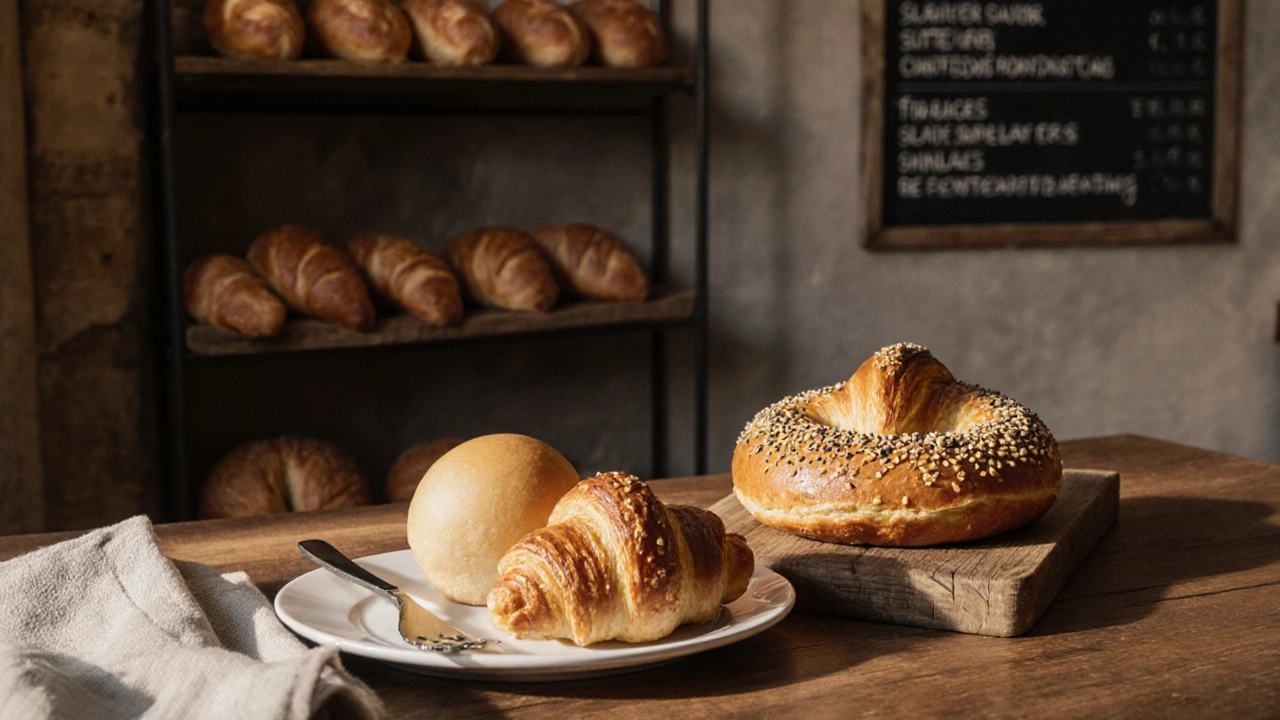Rohlík anglicky: jak se řekne a proč to vůbec má smysl
When you ask rohlík anglicky, a type of baked bread roll common in Central Europe, often with a crispy crust and soft interior. Also known as bun, it is roll, but neither term fully captures what a Czech rohlík actually is. Many people think "bun" is the right translation, but that’s not quite right. A bun in the UK or US is usually sweet, soft, and sometimes filled with fruit or cinnamon. A rohlík? It’s savory, slightly chewy, and often eaten with butter, ham, or cheese. It’s not a dessert. It’s not a sandwich bread. It’s its own thing — and that’s why the translation matters.
And here’s the catch: English doesn’t have a single word that matches the Czech rohlík perfectly. That’s because food cultures don’t line up neatly. In the US, you might get a "kaiser roll" — that’s the closest in shape, but it’s usually larger, denser, and less buttery. In Germany, they have "Brötchen" — similar, but often crustier and less flaky. In the UK, "roll" could mean anything from a plain white bread roll to a buttery bap. None of them taste like your local pekař’s rohlík. So when you’re explaining it to someone abroad, you don’t just say "roll". You say: "It’s like a roll, but…" and then you describe the crunch, the shape, the way it’s slightly toasted on the outside. That’s when they get it.
Why does this even matter? Because language isn’t just about words — it’s about context. If you’re writing a recipe, translating a menu, or just trying to explain your favorite breakfast to a friend from abroad, using the wrong word leads to confusion. You don’t want someone serving you a sweet cinnamon bun when you’re craving a savory rohlík with ham. And if you’re shopping online for bread, typing "rohlík" won’t get you anywhere. You need to know the right terms to find what you’re looking for — whether it’s in an English-language store, a food blog, or a cooking video.
This is why understanding the difference between "rohlík", "bun", "roll", and "Brötchen" isn’t just a language lesson — it’s a practical skill. It helps you communicate better, eat better, and even avoid awkward moments when you order food abroad. And if you’re learning English, knowing these small but important distinctions makes your language feel more real, not just textbook.
Below, you’ll find real-life examples of how people get this wrong — and right — from everyday situations, recipes, and even travel stories. You’ll see how one word can change everything, not just in translation, but in taste, expectation, and experience.
18 lis
Napsal :
Eliška Novotná
Kategorie :
Jazyky a překlady
Štítky :
rohlík anglicky
rohlík překlad
croissant
roll
bagel

Jak říct rohlík anglicky? Správný překlad a jak ho použít v každodenní mluvě
Zjistěte, jak správně říct rohlík anglicky - roll, croissant nebo bagel? Přesný překlad podle typu rohlíku a jak se vyhnout běžným chybám při objednávání v zahraničí.
© 2025. Všechna práva vyhrazena.